- No products in the cart.
Month: June 2024
“En la Cabeza del Artista”. Collective Exhibition in LAB 36
The exhibition “En la Cabeza del Artista” is conceived as a showcase of different approaches to the representation of the head by a selection of artists, including Robert Mapplethorpe, Jaume Plensa, Yago Hortal, Erik Parker, Stephan Balkenhol, Joan Ponç, Gonzalo Guzmán, Jordi Bernadó, Roger Ballen, and Sergio Roger.
Robert Mapplethorpe

In “En la Cabeza del Artista,” we find two works by Robert Mapplethorpe, the celebrated American photographer known for documenting the New York subculture scene in the 60s and 70s. In “Statue Series” (1983), Mapplethorpe captures the essence and form of statues with timeless elegance, while in “Louise Nevelson” (1986), he reflects the strength and distinctive personality of the sculptor.
Jaume Plensa
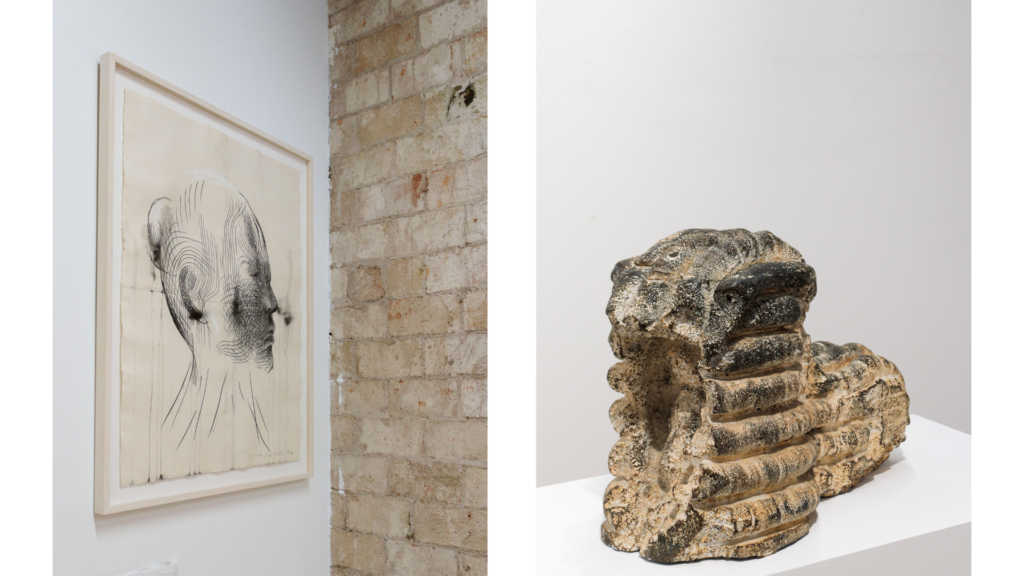
In this collective exhibition, we find two unusual works by the renowned sculptor Jaume Plensa. On one hand, his graphic work “Étude en Jaune VI” (2020) is a study of the anatomy of the head. On the other hand, “CAP III” (1988) is a sample from the beginning of his career. In the eighties, his sculpture was anthropomorphic, with volumes that transported us to human landscapes with totemic and primitive echoes.
Yago Hortal
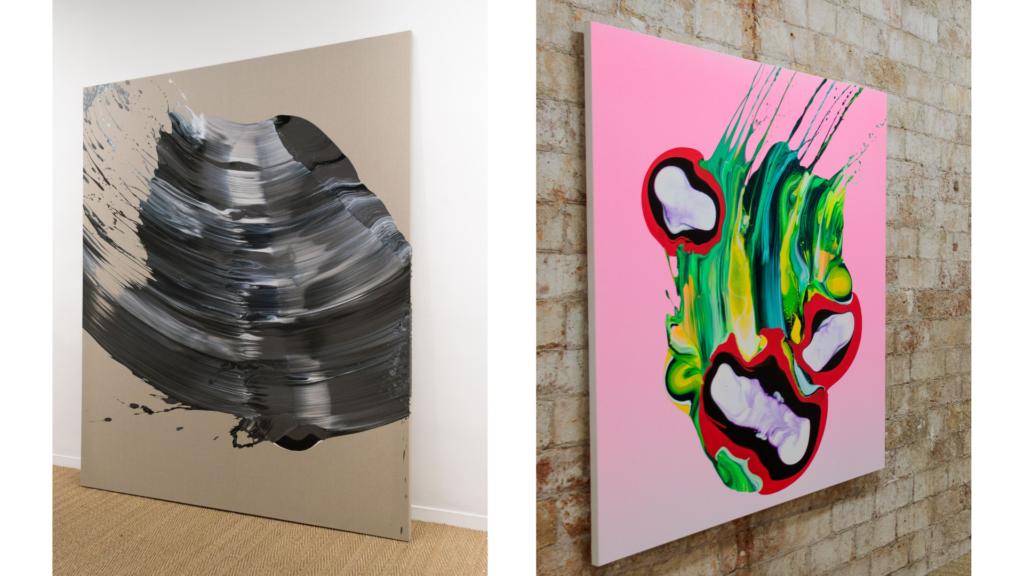
Yago Hortal‘s work stems from a strong commitment to painting and the very act of painting. In “SP 119” (2016), the characteristic use of intense colors and dynamic movements by Hortal can be observed. Despite the marked abstraction of the piece, the color stains create a form that resembles a face. In “Z78” (2023), Hortal continues his exploration of abstraction with dynamic and fluid brushstrokes, differing from the painter’s usual vibrant palette.
Erik Parker

Erik Parker is known for his style that fuses influences from Pop Art and the American psychedelic subculture. In “S/T (Split)” (2004), Parker uses mixed media to create a psychedelic composition in which the viewer can intuit the shape of a head.
Stephan Balkenhol

Stephan Balkenhol, a sculptor known for reintroducing figurative sculpture to the contemporary scene, uses carved softwoods to create works with visible textures and stark contrasts. In “Head of a man” (2005), Balkenhol presents a simple but expressive portrait, demonstrating his skill in woodworking. His sculptures evoke medieval techniques and folk art, standing out for their distinctive style and meticulous technique.
Joan Ponç

Joan Ponç, a Barcelona painter influential in the avant-garde art scene of the 40s and 50s, is known for his personal symbolism and his world inhabited by imaginary beings. In “Suite En la Cabeza del Artista” (1958-59), Ponç uses ink on paper to create drawings that explore the magical and mysterious aspects of reality.
Gonzalo Guzmán

Gonzalo Guzmán, a young contemporary sculptor, is known for his stainless steel sculptures that refer to his dream world. “Estela_31” (2024) is another example of Guzmán‘s use of steel to create sculptures that play with form and space, generating a strong visual impression.
Jordi Bernadó

The exhibition includes “Barcelona (BCN 878.1)c2bn” (2023) by Jordi Bernadó, a photographer known for his images that question reality and representation. This photograph captures “Flora,” the large-format sculpture by Jaume Plensa that was installed on Passeig de Gràcia in the summer of 2023 for his exhibition at La Pedrera.
Roger Ballen

Roger Ballen is known for his disturbing psychological studies and social statements. In “Perpetrator” (2003) and “Head Inside Shirt” (2001), Ballen uses black and white to capture unsettling scenes that explore the human subconscious.
Sergio Roger
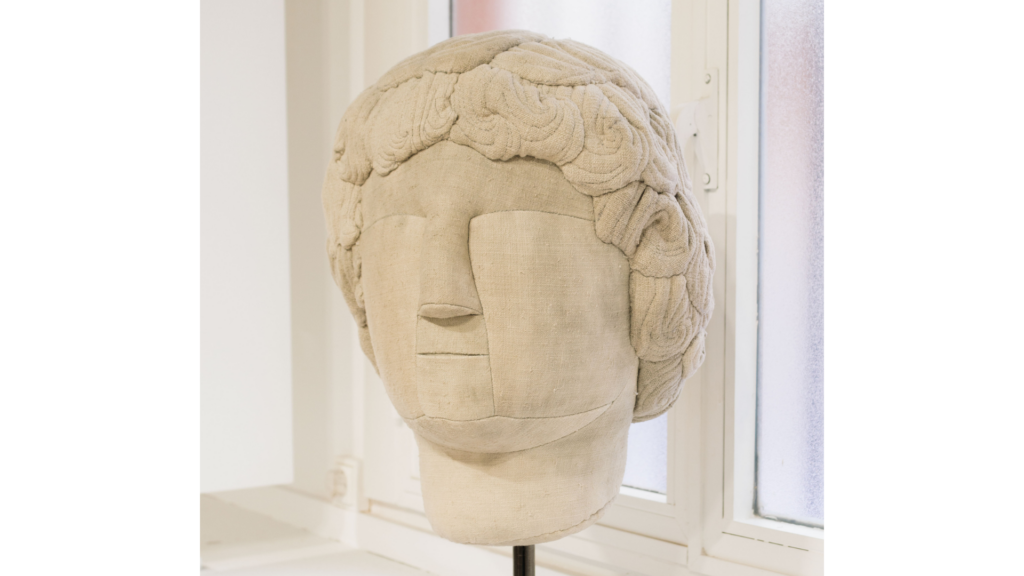
Sergio Roger draws inspiration from the beauty of ancient civilizations, especially the Greco-Roman era. He reinterprets and subverts iconic elements of classical art using natural textile fibers instead of marble. Each of his works is unique, created with antique fabrics like linen and silk, carefully selected from antique shops. With technical mastery in textile sculptures, Roger explores ancestral techniques with a contemporary vision, questioning our perception of the past and the permanence of traditional art.
“Landscape Untitled 2”. Group exhibition at the Mezzanina
32 years ago, galeria SENDA opened its doors and dedicated the summer an exhibition that was key in the history of the gallery titled “Landscape Untitled”. In it, invited Albert Oehlen, Christopher Wool and Peter Halley – artist with whom we mantain the relation and will be exhibiting after the summer. Each of them had a room and conceived the space as a little show.
This exhibition carried a fantastic text by Luis Francisco Perez in which he said:
“The practice of painting, even that which abandons itself to a maelstrom of contemporaneity devoid of memory, obeys a will to reconstruct, a desire projected towards the conquest of an existing territory.”
Facing the arrival of summer, we recall the Olympic spirit of ’92 with the America’s Cup, which this year takes place in Barcelona and brings us back the joy of a sporting project that puts the focus on our city. Thus, in SENDA we take up again the idea of landscape, which is so typical in the history of Catalan art, and we present “Landscape Untitled 2”. In this group show in the Mezzanine of the gallery, works by Joan Fontcuberta, Robert Wilson, Gao Xingjian, Peter Halley, Anna Malagrida, Gonzalo Guzmán and Glenda León are in dialogue.
The pieces in this exhibition
Glenda León
Glenda León‘s “Contours of the World” series of marbles revisits the forms employed in previous works, such as the canvas of “The Horizons of the World” (2018) or the “Contours of the World” silkscreens. In these new sculptures, the artist cuts the marble following different shapes. From natural elements such as a tree branch, to the flight of a bee, the Ganges River or the Valdivia earthquake in Chile, the sculptures explore the interaction between nature and the human interpretation of its phenomena. Each carefully crafted piece shows León‘s skill in transforming the rigidity of marble into organic and fluid representations, giving a new life to this material.
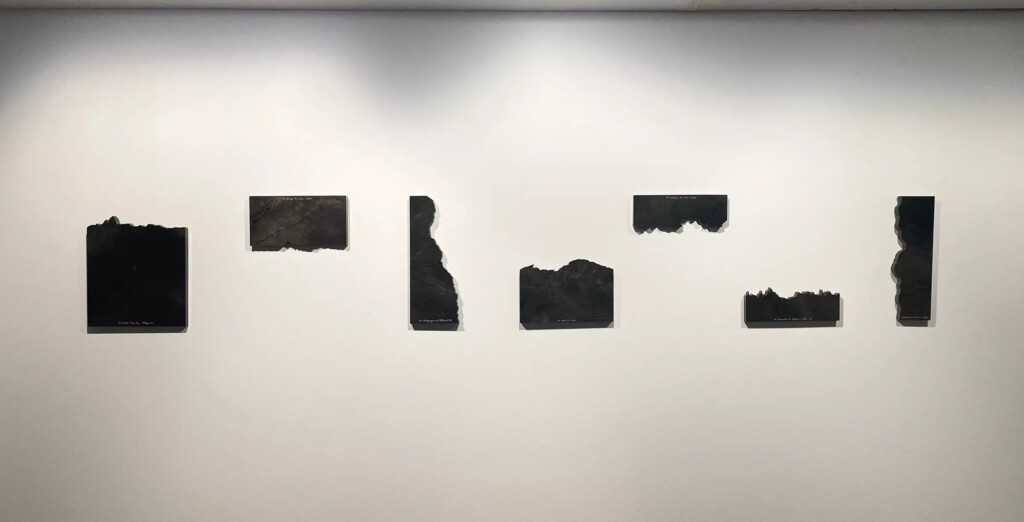
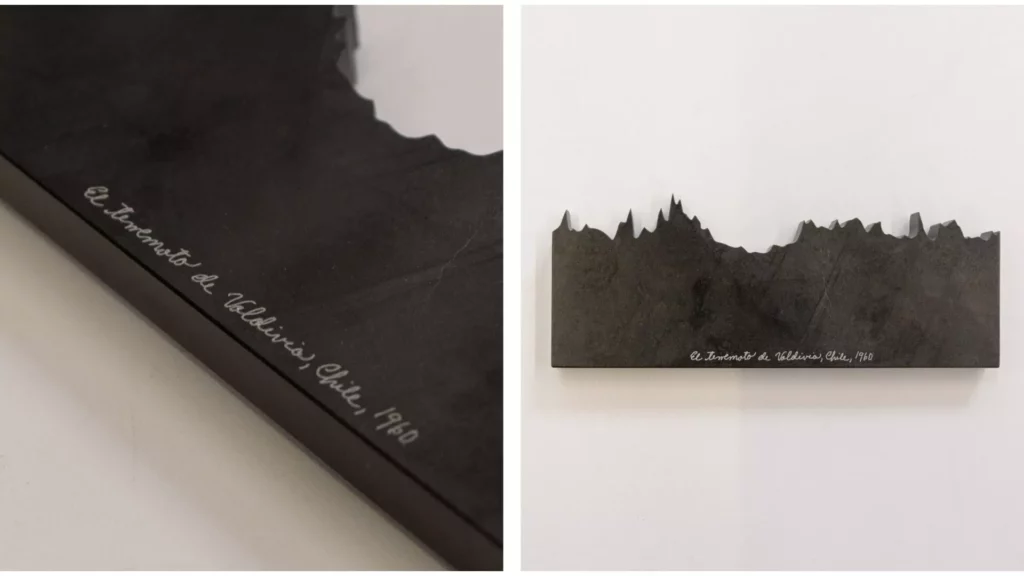
Joan Fontcuberta
With “Paisaje de la Seguridad: Banco de España/Caja de Seguridad” (2001), Joan Fontcuberta immerses in a reflection on perception, reality, security and politics. This work is part of his series “Landscapes of Security” and is closely related to his idea that all nature has become artifice due to the influence of culture and economic and political contexts.

Robert Wilson
Robert Wilson’s works are a series on paper that reveal his creative process in the conception of the opera “Der Messiah”, as shown in the exhibition of his originals.
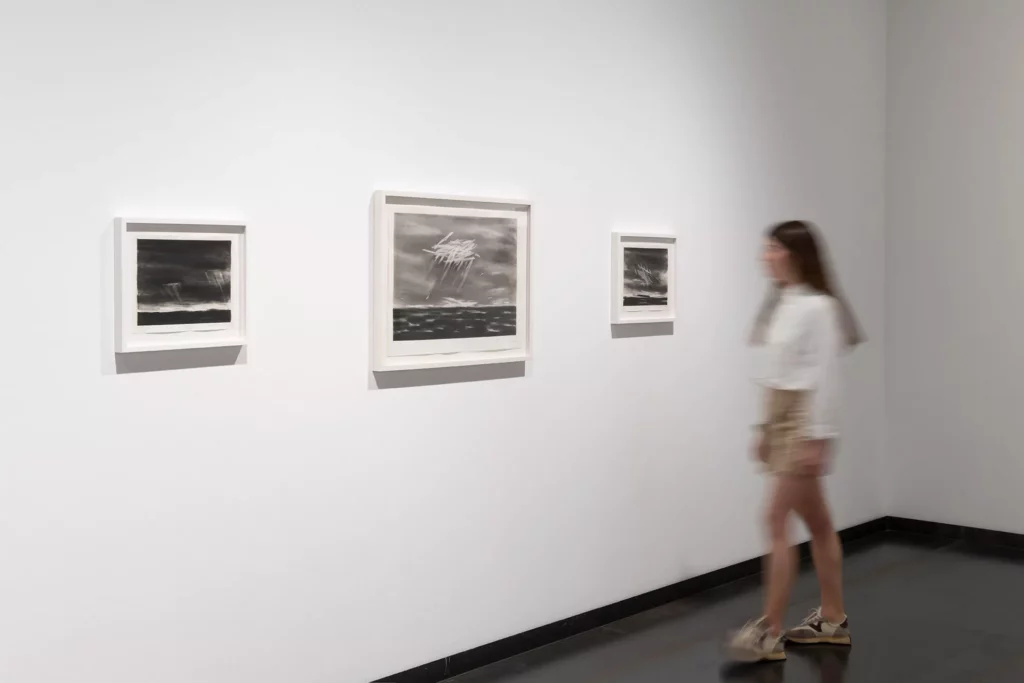
This sequence of four works depicts a mountain as the protagonist, highlighting the distinctive use of light in each piece. Wilson uses light not only as a visual element, but as a narrative medium that transforms the perception of the landscape in each work. Through subtle and dramatic variations in lighting, each work captures a unique moment, suggesting the temporal and atmospheric evolution of the mountain, and which relates directly to his set design of “Der Messiah”.
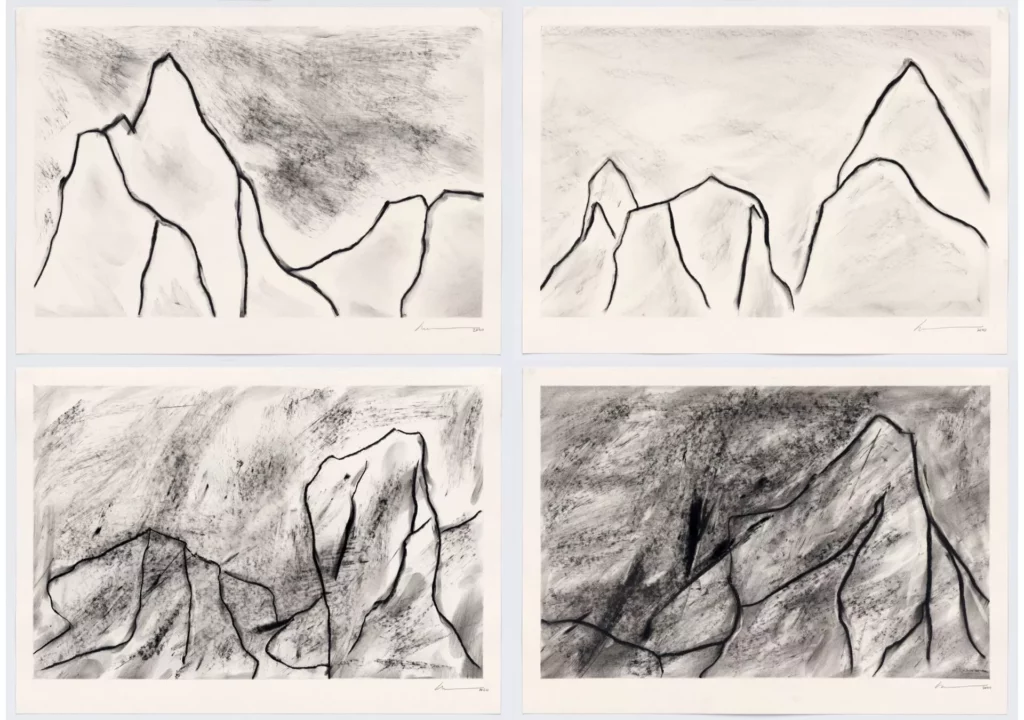
Gao Xingjian
Gao Xingjian, known as much for his literary work as for his visual art, presents in “Cité fantastique” (2011) an interpretation of the landscape that plays with abstraction and suggestion. The painting, with its monochromatic tones and fluid strokes, evokes a sense of mystery and contemplation.

Peter Halley
We also find a unique work on paper by Peter Halley. “Cell 8” uses graphite and creates a texture and tone that differs significantly from his usual use of color, but maintains his interest in systems and connections. This drawing shows a study of space and confinement, recurring themes in Halley‘s work, where he often explores the architecture of the urban environment, understanding it as landscape, and the interaction between personal and social space.
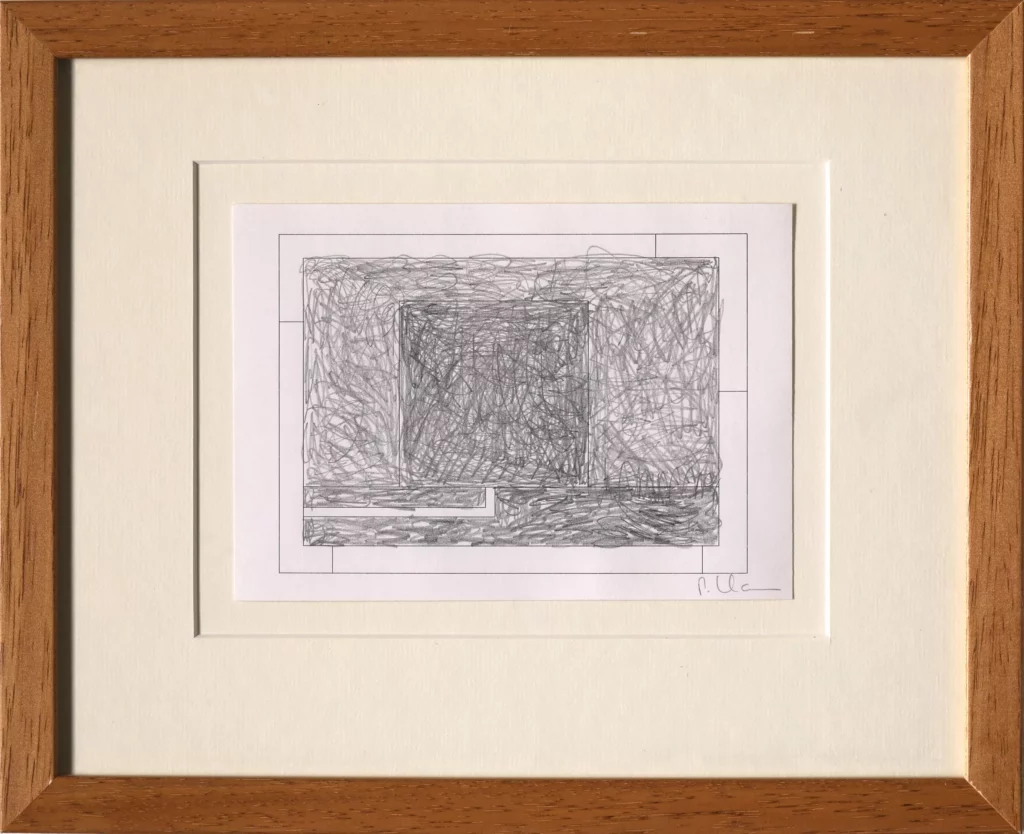
Anna Malagrida
The photograph “Refuge 8” (2006) by Anna Malagrida is part of a series of photographs of shelters in the Jordanian desert. These basic and precarious constructions are the simplest expression of the form represented by the notion of refuge, roof, or protection. The photographic vision transforms these anonymous constructions into desert sculptures. This series of photographs of shelters in the Jordanian desert, which captures the simplest essence of protection and refuge, dialogues with the various interpretations of the landscape presented in the exhibition “Landscape Untitled 2,” transforming these anonymous constructions into desert sculptures that resonate with history and human nature.

Gonzalo Guzmán
Finally, Gonzalo Guzmán‘s two sculptures induce us to reflect on how art relates to its context. The ability of the sculptures to reflect the accompanying landscape highlights how context influences the perception of the artwork. This dynamic interaction between the work and its surroundings invites viewers to consider how context modifies our experience and understanding of art and the world.
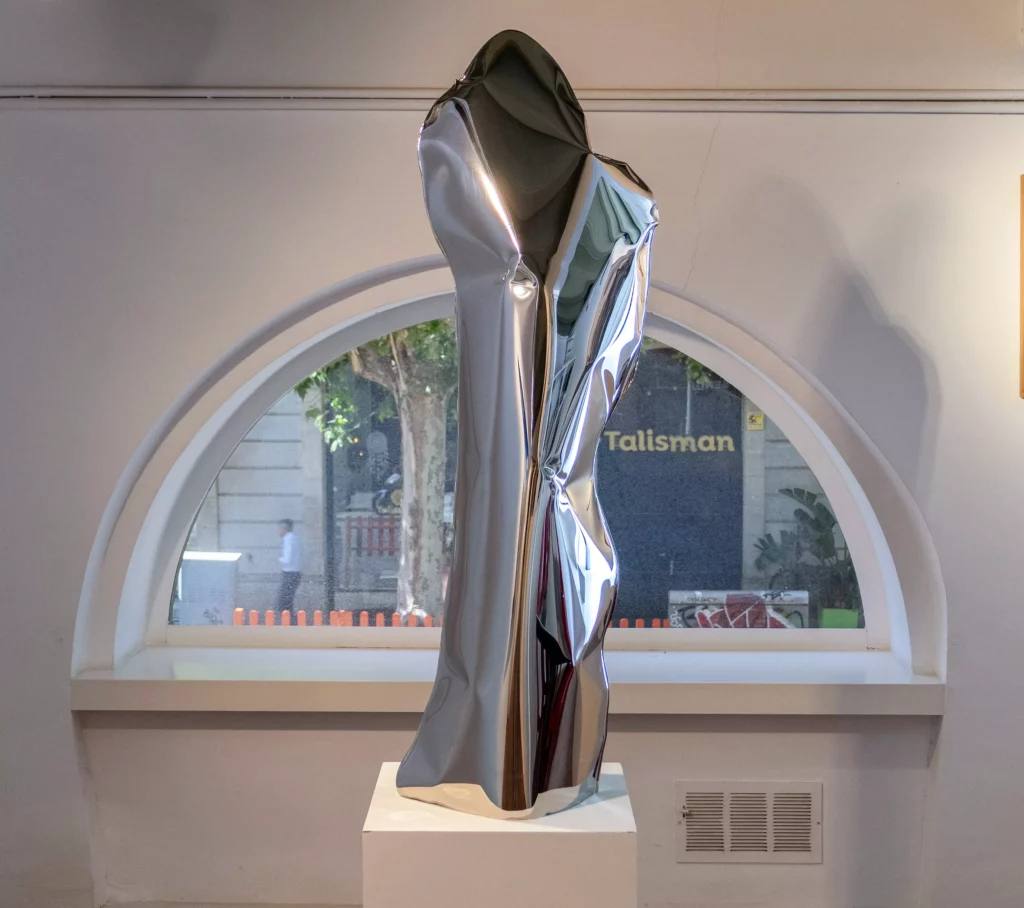
Thus, “Landscape Untitled 2” is a journey through different interpretations of landscape, from the tangible and physical to the imaginary and sensory.
























































































